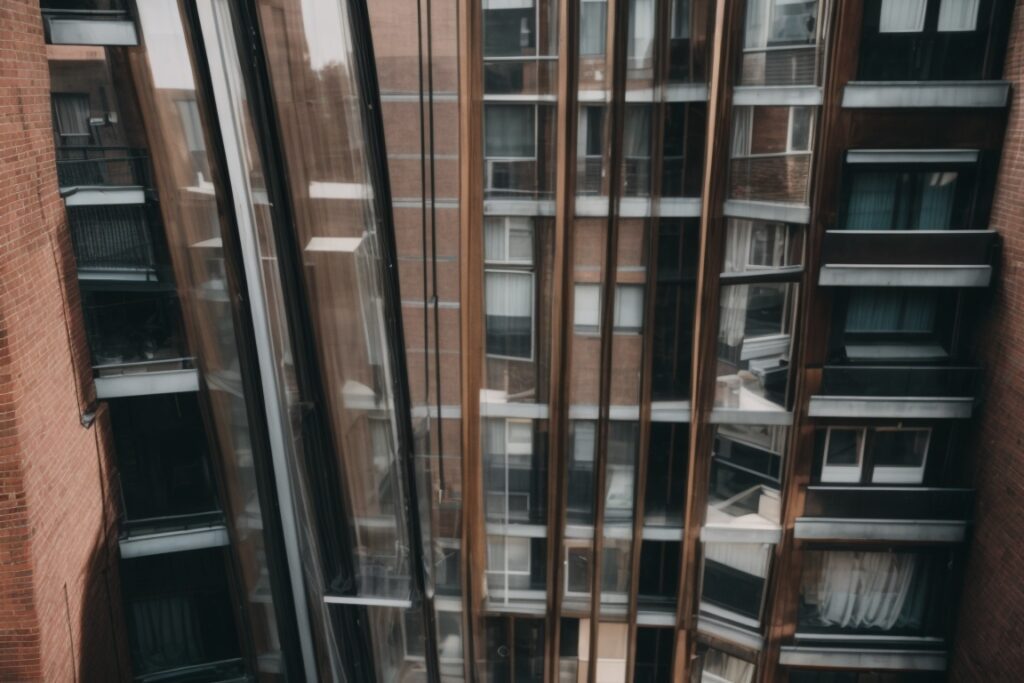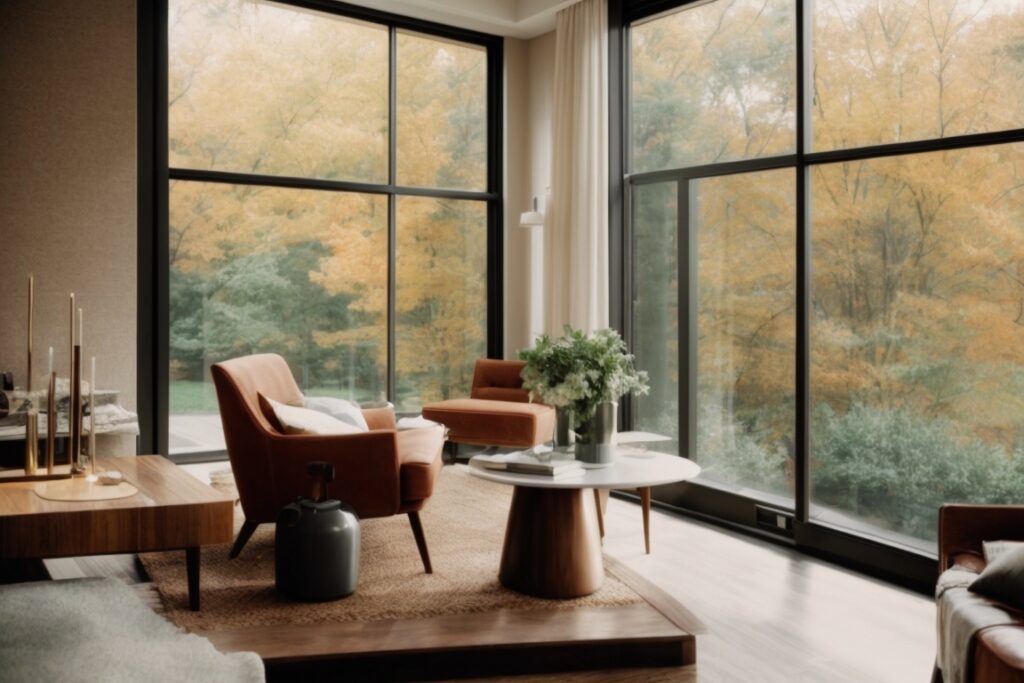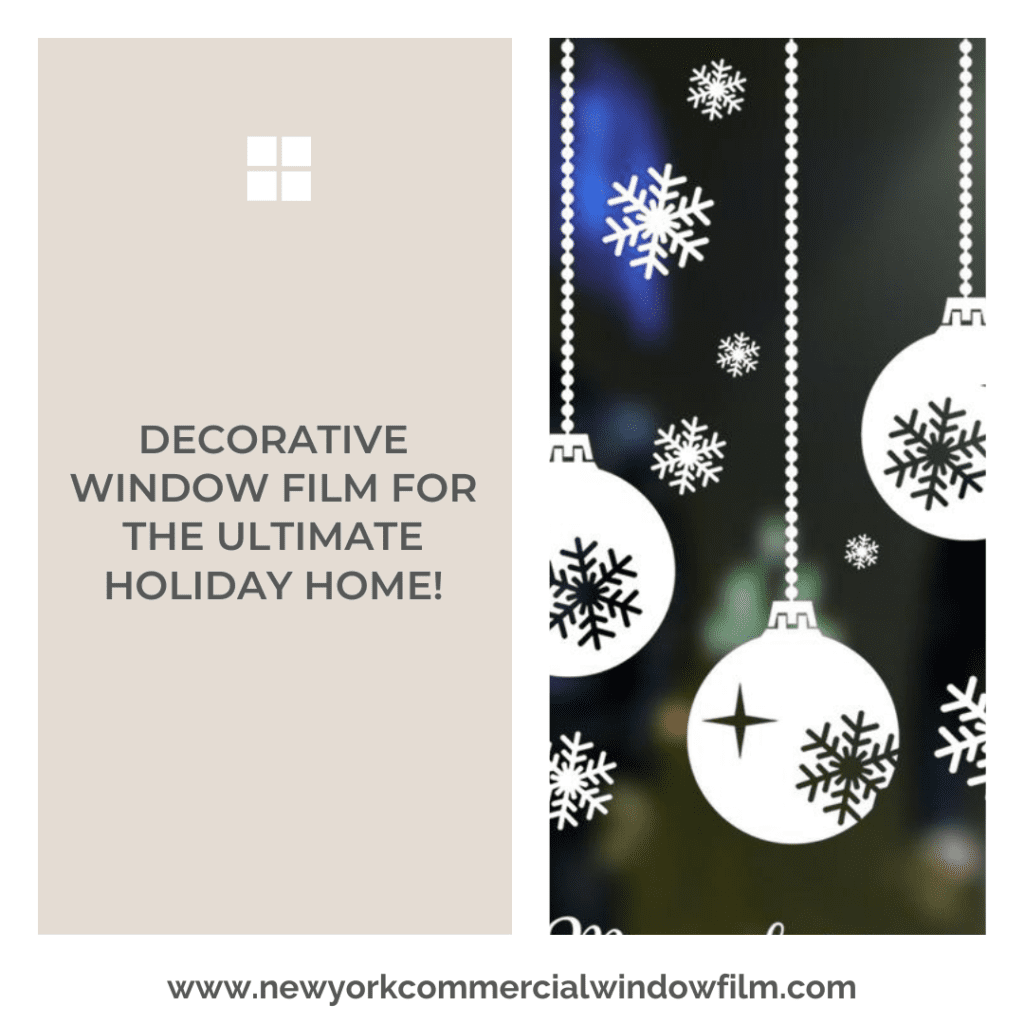Combatting Urban Heat in New York with Innovative Solutions
In the bustling streets of New York where skyscrapers dominate the skyline, a silent challenge is affecting the comfort and well-being of its residents – the rising indoor temperatures due to intense sunlight exposure. This issue has been increasingly problematic, especially during the sweltering summer months. A game-changer in addressing this challenge is the emergence of heat reduction window film, an innovative solution designed to mitigate the adverse effects of heat while ensuring New Yorkers can enjoy the comfort of their urban homes without compromise.
The excessive heat not only compromises the comfort of indoor spaces but also leads to skyrocketing energy bills as residents ramp up their air conditioning in an attempt to cool down their homes. The role of heat reduction window film becomes crucial in this scenario, serving as a barrier that reflects and absorbs a significant portion of solar heat before it permeates glass windows. By doing so, it effectively reduces heat entry, maintaining a more consistent and comfortable indoor temperature. Despite its significant benefits, many New York homeowners are still unaware of this innovative solution that stands to revolutionize urban comfort dramatically.
As urban areas continue to grow and develop, finding sustainable and efficient ways to maintain comfort in the face of rising temperatures is of paramount importance. The introduction of heat reduction window film in New York presents a beacon of hope, aiming to catalyze a shift towards more sustainable living while enhancing the urban living experience. It’s a call to action for homeowners to adopt innovative solutions that not only promise immediate comfort but also contribute towards wider environmental benefits by reducing reliance on energy-intensive cooling systems.
Understanding Heat Challenges in New York Homes
New York’s urban landscape presents a unique combination of beauty and challenge, particularly when confronting the issue of heat accumulation in homes and buildings. This “urban heat island” effect exacerbates the heat challenges, significantly impacting the comfort and livability of spaces within the city. The primary issue at hand is the significant increase in indoor temperatures, which not only affects residents’ comfort but also leads to escalated energy bills due to the increased use of air conditioning systems.
The struggle to maintain a cool and comfortable indoor environment during the hot summer months in New York is a growing concern amongst homeowners. Traditional methods of heat management, such as heavy drapes or external shading, often fall short in providing an adequate solution, and in some cases, may not be feasible due to building codes or aesthetic considerations. This has led to an increased interest in innovative solutions like heat reduction window film, designed to mitigate heat accumulation effectively without compromising on natural light or views of the cityscape.
Unveiling the Heat Syndrome in New York
Did you know New York City homes are subject to an intense “urban heat island effect” that can increase temperatures by up to 7°F compared to rural areas? This startling fact highlights the urgent need for heat reduction solutions in urban spaces. Each summer, more than 50% of New Yorkers suffer from heat-related discomfort within their homes due to inadequate heat management solutions. Furthermore, the demand for electricity spikes by over 20% during peak heatwaves, driven largely by the increased use of air conditioning units, illustrating the pressing need for energy-efficient solutions like heat reduction window film to mitigate the heat’s impact.
The Heat Dilemma in New York Homes
Living in New York, with its skyscrapers and bustling urban life, comes with its set of challenges, especially when it comes to maintaining a comfortable home environment. The problem many homeowners face is the significant heat that builds up within their homes, particularly during the sweltering summer months. This issue isn’t just about discomfort; it’s about the broader implications it holds for residents’ daily lives and well-being.
Excessive indoor heat can turn a supposed sanctuary into a stifling box, making it difficult to relax, sleep, or even perform basic tasks. The urban heat island effect, exacerbated by the city’s dense infrastructure, means that indoor temperatures can often be much higher than those outdoors, leading to an over-reliance on air conditioning. This not only puts a strain on electrical systems and household budgets due to sky-high energy bills but also contributes to the larger environmental problem of increased energy consumption.
Moreover, for families with young children or members who have health conditions, the elevated temperatures can pose serious health risks, such as heatstroke or exacerbation of respiratory problems. The discomfort and potential health implications highlight the urgent need for a solution that addresses the root cause of excessive indoor heat without further contributing to the cycle of energy consumption and high costs.
This heat buildup problem is particularly pronounced in New York due to the city’s architectural designs, with many homes featuring large windows that, while offering beautiful views, can act as magnifying glasses for sunlight, further increasing interior temperatures. The situation calls for a modern, efficient approach to managing indoor temperatures, one that circumvents the pitfalls of traditional cooling methods.
Understanding the Problem: The Urban Heat Dilemma in New York
The concrete jungle of New York serves as more than just a bustling metropolis; it’s also a vast expanse of heat-retaining surfaces that exacerbate the urban heat island effect. This phenomenon creates a cyclical problem, especially during the summer months, as buildings and roads absorb and re-radiate the sun’s heat more than natural landscapes, leading to significantly higher temperatures in the city compared to surrounding rural areas.
For New Yorkers, this escalation in temperature isn’t just uncomfortable—it’s also expensive and energy-intensive. The reliance on air conditioning skyrockets, pushing electricity bills to new heights and increasing the city’s overall carbon footprint. The problem of urban heat isn’t just a matter of physical discomfort; it’s also an economic and environmental dilemma that calls for an immediate and sustainable solution. Heat reduction window film emerges as a promising answer to this, offering a way to mitigate the intense indoor heat without relying solely on air conditioning.
Transforming Urban Residences: A New York Case Study
In New York, the Johnson family struggled with soaring summer temperatures making their apartment unbearably hot, resulting in high energy bills from constant air conditioning use. After installing heat reduction window film, they noticed an immediate improvement in their indoor comfort and a significant decrease in their cooling costs. This real-life example illustrates the effectiveness of heat reduction window film in urban settings, offering a practical resolution for New Yorkers facing similar challenges.
Ignoring Heat Reduction Window Film: A Decision New Yorkers Will Regret
Overlooking the significance of heat reduction window film in New York homes can lead to a series of adverse outcomes that extend beyond discomfort. In a bustling city where temperature fluctuations and heatwaves are becoming increasingly common, the absence of this crucial modification can negatively impact both the wellbeing of residents and the structural integrity of their living spaces.
Without the protective barrier provided by heat reduction window film, homes are subjected to excessive heat. This not only raises indoor temperatures to uncomfortable levels but also increases reliance on air conditioning systems. The resultant spike in energy consumption translates to heftier utility bills, straining household budgets unnecessarily.
Moreover, prolonged exposure to intense sunlight can cause furniture, flooring, and artworks to fade, detracting from the aesthetic appeal and value of your home. Ignoring the installation of heat reduction window film can, therefore, lead to significant financial losses in the long run, both through increased operational costs and decreased property value.
By failing to address this easy-to-solve issue, New Yorkers risk the comfort, finances, and appearance of their homes. The consequences of ignoring such a beneficial upgrade have far-reaching implications that extend beyond the summer months.
How Heat Reduction Window Film Impacts New York Homes Economically
Implementing heat reduction window film in New York homes offers a significant economic advantage. This innovative solution contributes to lower energy bills by reducing the amount of heat entering through windows, thus decreasing the need for air conditioning. Over time, the cost savings from reduced energy consumption can be substantial. Moreover, this enhancement can boost the property’s market value as energy-efficient homes are increasingly sought after. In essence, investing in heat reduction window film not only provides immediate economic relief through energy savings but also enhances long-term property value.
Heat Reduction Window Film: A New York Necessity
In the bustling urban landscape of New York, where skyscrapers and concrete abound, the battle against the intense heat can seem almost insurmountable. However, heat reduction window film presents a revolutionary solution, positioning itself as the indispensable ally for New Yorkers seeking comfort and coolness in their homes.
Heat reduction window film addresses the unique challenges posed by New York’s urban environment. It mitigates the greenhouse effect caused by standard glass windows, which can significantly increase indoor temperatures. By reflecting and absorbing a portion of the sun’s heat before it penetrates your home, this innovative film helps maintain cooler indoor environments, enhancing the comfort levels of New York homes.
Moreover, the application of heat reduction window film results in notable energy savings. With less heat entering homes, there’s a decreased reliance on air conditioning systems during the sweltering New York summers. This not only reduces energy bills but also contributes to the city’s broader efforts to decrease energy consumption and minimize its carbon footprint. Thus, heat reduction window film is not just a product—it’s a pivotal part of New York’s solution to achieving sustainable, urban living without compromising on comfort.
The significance of heat reduction window film extends beyond its practical benefits. It also preserves the aesthetic integrity of New York homes. Unlike some cooling options that require significant alterations to a home’s exterior, window film offers an almost invisible solution that doesn’t detract from urban architectural beauty. For New Yorkers who take pride in their home’s appearance, this is an invaluable advantage.
Revolutionizing Urban Comfort: Heat Reduction Window Film in New York
As urban areas like New York grapple with the challenges of heatwaves and the urban heat island effect, heat reduction window film emerges as a transformative solution for homeowners. This innovative product is engineered to significantly lower indoor temperatures, creating a more comfortable and sustainable living environment. By reflecting and absorbing a substantial portion of the sun’s heat before it penetrates through the windows, the film plays a crucial role in reducing reliance on air conditioning systems.
Not only does this lead to a more pleasant indoor climate, but it also translates into considerable energy savings, addressing the high costs of cooling urban homes during the summer months. The effectiveness of heat reduction window film in blocking UV rays further protects inhabitants from harmful exposure while preserving the integrity of interior furnishings by preventing fading.
In a bustling metropolis like New York, where space and resources are often limited, the adoption of heat reduction window film represents a practical and efficient method to enhance urban living conditions. Its application offers a dual benefit of improving indoor comfort and contributing to the city’s broader sustainability goals by reducing energy consumption.
Benefits and Features: Heat Reduction Window Film in New York
Embracing heat reduction window film in New York homes leads to a myriad of benefits that enhance urban living. First and foremost, this innovative solution dramatically lowers indoor temperatures, making homes much more comfortable during the sizzling summer months. Additionally, it contributes to significant energy savings by reducing the need for air conditioning, thus lowering utility bills. The film also filters out harmful UV rays, protecting both the inhabitants and interior furnishings from sun damage. Moreover, it enhances privacy and adds an extra layer of security, without sacrificing natural light or the view of the city’s skyline. All these features make heat reduction window film an essential component for New York residences seeking comfort and efficiency.
Success Stories: Cooling Down the Big Apple with Heat Reduction Window Film
In the bustling streets of New York, the impact of heat reduction window film is becoming increasingly apparent, with countless homeowners finding solace in this innovative solution. One of the most compelling testimonies comes from the Robinson family in Brooklyn. They installed heat reduction window film in their classic brownstone home and were astounded by the immediate difference. “Our living room used to be like a greenhouse every summer, despite heavy curtains and air conditioning,” Mrs. Robinson shared. “Now, it’s significantly cooler, and we’re seeing lower electricity bills. It’s truly been a game-changer for our family’s comfort and spending.”
Another New Yorker, Mr. Thompson from Manhattan, echoes this sentiment. Living on the top floor of a high-rise, he was constantly battling the intense heat that came with his spectacular views. “I was skeptical about window films, thinking they might affect my view or darken my apartment too much. But, the difference in heat is remarkable without sacrificing natural light. I wish I had known about heat reduction window film years ago,” he remarked.
These stories underline the profound effect heat reduction window film can have on urban living in New York, providing much-needed relief from the heat while fostering energy efficiency in homes.
Case Study: The Cooling Transformation of a New York Apartment with Heat Reduction Window Film
In the bustling heart of New York, the Hamiltons faced unbearable summer heat in their south-facing apartment. Deciding to install heat reduction window film, they witnessed a remarkable change. The temperature inside their home dropped significantly, providing a comfortable habitat against the scorching sun. Their energy bill saw a drastic decrease, showcasing the film’s effectiveness in heat management. This success story emphasizes the transformative power of heat reduction window film in urban living spaces. If the Hamiltons’ journey has inspired you, take the first step towards a cooler, more comfortable home by exploring our heat reduction window film options today.






About The Author: Angus Faith
Angus Faith is a window film installer with a professional background in institutional and commercial building construction and sustainable building design. After leaving his hometown in Scotland, Angus relocated to New York with his wife and family. He has been installing window film for commercial buildings in New York for over ten years and has overseen numerous projects for schools, retail buildings, office buildings, and hotels. Over the years, his training and research has allowed him to become a product expert, and gain an in-depth understanding of products from top brands like 3M, LLumar, Vista, and more. When he's not consulting on commercial window film projects, Angus enjoys spending his time visiting New York's many parks and museums and traveling abroad whenever he gets the chance.
More posts by Angus Faith